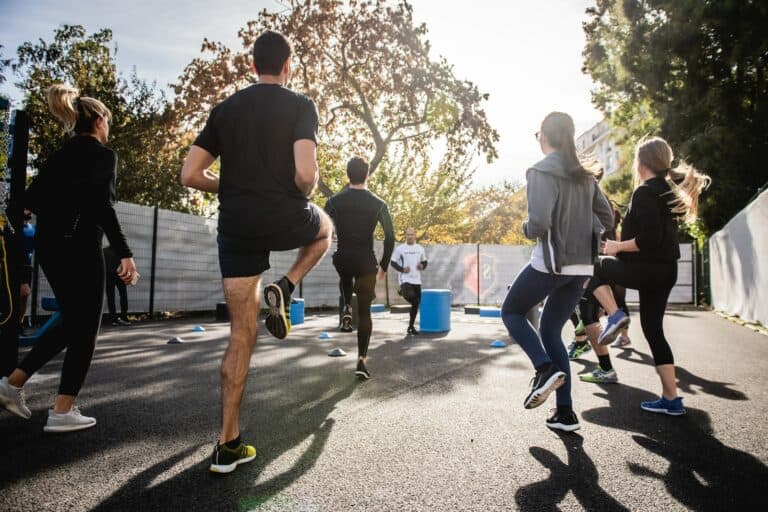Trail running is a dynamic and exhilarating sport that challenges both your physical endurance and mental toughness. However, not everyone has access to trails for training. Whether you live in a concrete jungle or simply lack nearby trails, there are still effective ways to prepare for trail running without hitting the dirt paths. In this guide, we’ll explore how to train for trail running without trails and exercises to help you build the strength, endurance, and agility needed for successful trail running, even in urban environments.
How to Train for Trail Running Without Trails
Building Leg Strength for Uneven Terrain
One of the key aspects of trail running is navigating uneven surfaces and varying terrain. To prepare for this, focus on exercises that target your lower body muscles. Incorporate squats, lunges, step-ups, and single-leg squats to improve stability and prevent injuries on the trail.

Engaging Core and Stability Exercises
Maintaining good form is essential for trail runners, especially on challenging terrains. Strengthening your core and stability muscles will help you maintain balance and control. Planks, Russian twists, and stability ball exercises are excellent additions to your training routine.
Adding Resistance to Mimic Elevation Gain
Even if you don’t have access to steep climbs, you can simulate the effort required by incorporating resistance training. Utilize resistance bands or weighted vests during exercises like squats and lunges to mimic the extra effort needed for uphill running.
Cardiovascular Endurance and High-Intensity Workouts
Emphasizing Cardiovascular Endurance
Trail running often demands sustained cardiovascular effort, especially on hilly runs. Incorporate moderate-intensity workouts such as long runs, hill repeats, and interval training to enhance your cardiovascular endurance.
Treadmill Workouts for Varied Terrain
While you may not have access to actual trails, a treadmill can be a valuable tool for simulating different terrains. Adjust the incline to mimic steep climbs and vary your speed to replicate the changing paces encountered on the trail.

Cross Training and Injury Prevention
Incorporating Rest for Recovery
Avoid overtraining and prevent injuries by incorporating rest days into your training plan. Rest allows your body to recover and adapt to the demands of trail running. It’s equally important as the actual training sessions.
Diversifying Workouts with Cross Training
Engage in activities like cycling, swimming, or yoga to work different muscles and reduce the risk of overuse injuries. Cross training complements your trail running training by targeting areas that may not receive as much focus during runs.
Mental Toughness and Race Day Preparation
Cultivating Mental Toughness
Trail running often requires mental fortitude to tackle challenging terrain and push through fatigue. Practice running in varied conditions and focus on maintaining good form even when fatigue sets in. Visualization techniques can also help prepare your mind for the demands of race day.

Race Day Strategy for Trail Races
If possible, incorporate some runs on hilly terrain to practice pacing and energy conservation. Familiarize yourself with the race course’s elevation profile and plan your strategy accordingly. Gradually increase the distance of your long runs to build confidence for longer races.
Setting Realistic Goals and Monitoring Progress
Establishing Realistic Training Goals
Set specific, measurable, and achievable goals for your trail running journey. Whether it’s completing a half marathon or conquering a particularly steep hill, having a target will keep you motivated and focused.
Monitoring Progress and Making Adjustments
Track your training sessions, noting improvements in distance, pace, and overall performance. Adjust your training plan as needed to ensure continued progress. Consider incorporating more advanced exercises or increasing the intensity of your workouts as you become more comfortable with the training regimen.
In conclusion, while trails may not be readily available, you can still effectively train for trail running in urban environments or areas without natural trails. By incorporating a well-rounded training program that focuses on strength, endurance, and mental preparedness, you can become a proficient trail runner. Remember to maintain good form, set realistic goals, and monitor your progress to ensure steady improvement. With dedication and the right training, you’ll be well-prepared to conquer any trail race that comes your way. Happy running!
